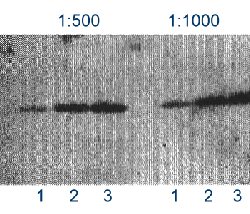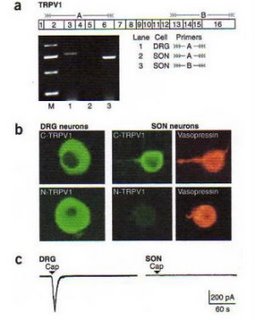Data Courtesy of Dr. Yan Sun University of Maryland School of Medicine Baltimore

Image: Double immunofluorescence staining in cultured human bladder urothelial cells (BUCs). BUCs show cytokeratin (red areas) and P2X3 (green areas) expression.

Figure: Flow cytometry and FACS analysis of P2X3 expression in human BUCs. P2X3 expression in BUCs were compared among in vitro stretched samples and unstretched samples in both normal and interstitial cystitis (IC) patients. A, unstretched normal BUCs. B, stretched normal BUCs. C, unstretched IC BUCs. D, stretched IC BUCs. M1 region represents P2X3 localization detected.






